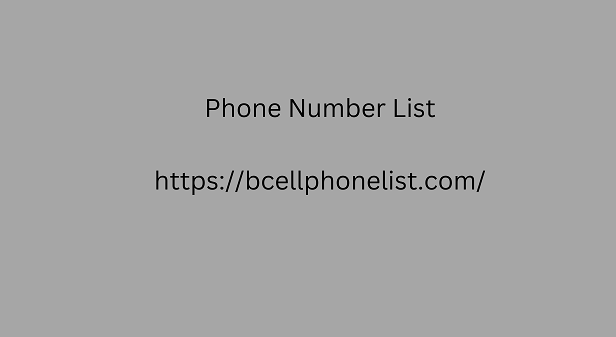Post by aloo5436459 on Feb 24, 2024 1:52:44 GMT -4
Due to the increasing number of smartphone users over the years, sites are now accessed from mobile devices rather than desktop computers. That's why Google continues to update its algorithm with a mobile priority. Mobile is now considered the primary value to determine your site's ranking for both mobile and desktop versions. Therefore, having knowledge about technical SEO from a mobile perspective has become an important requirement to make your site better. What is Technical SEO? Technical SEO is a set of studies that provide the necessary information to the requests of Google and other search engines to determine the true purpose of your content.
Technical SEO deals with the coding and technical problems of a site that affect search engines. Which mobile configuration should you use for a mobile site? Considering the current Phone Number List conditions, there are three different mobile configurations that Google recommends. Flexible design, dynamic presentation and separate URL addresses make up these three different mobile configurations. However, Google recommends using flexible designs unless necessary. Unlike the other two configurations, the flexible design can display the mobile and desktop versions of a site without any HTML or URL changes.

Flexible Design A flexible design means that desktop pages can adapt to screen sizes using various CSS media queries, displaying content to the user without any distortion. Advantages: A single URL address is much better for users and makes content more shareable or clickable. Since Google crawlers and other bots crawl the page only once, site pages are indexed more efficiently. There is no need for redirects to take the user to the right page. The lack of need for redirects allows fewer errors to be made regarding other redirects on the site. Weaknesses: If there is a problem with the desktop version of the site, it means that there will also be a problem with the mobile version.
Technical SEO deals with the coding and technical problems of a site that affect search engines. Which mobile configuration should you use for a mobile site? Considering the current Phone Number List conditions, there are three different mobile configurations that Google recommends. Flexible design, dynamic presentation and separate URL addresses make up these three different mobile configurations. However, Google recommends using flexible designs unless necessary. Unlike the other two configurations, the flexible design can display the mobile and desktop versions of a site without any HTML or URL changes.

Flexible Design A flexible design means that desktop pages can adapt to screen sizes using various CSS media queries, displaying content to the user without any distortion. Advantages: A single URL address is much better for users and makes content more shareable or clickable. Since Google crawlers and other bots crawl the page only once, site pages are indexed more efficiently. There is no need for redirects to take the user to the right page. The lack of need for redirects allows fewer errors to be made regarding other redirects on the site. Weaknesses: If there is a problem with the desktop version of the site, it means that there will also be a problem with the mobile version.
